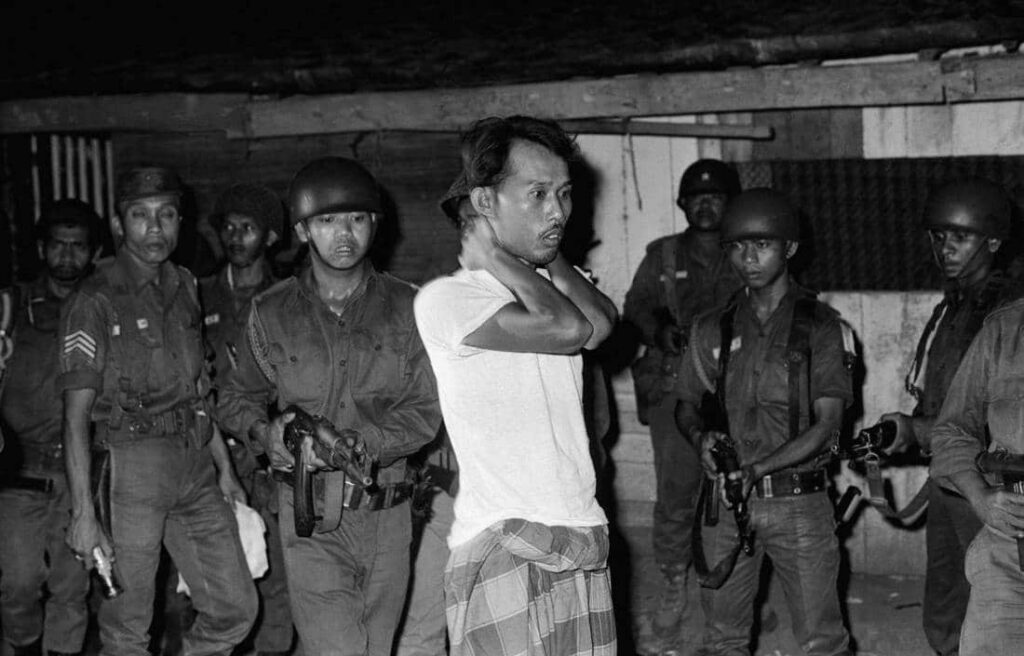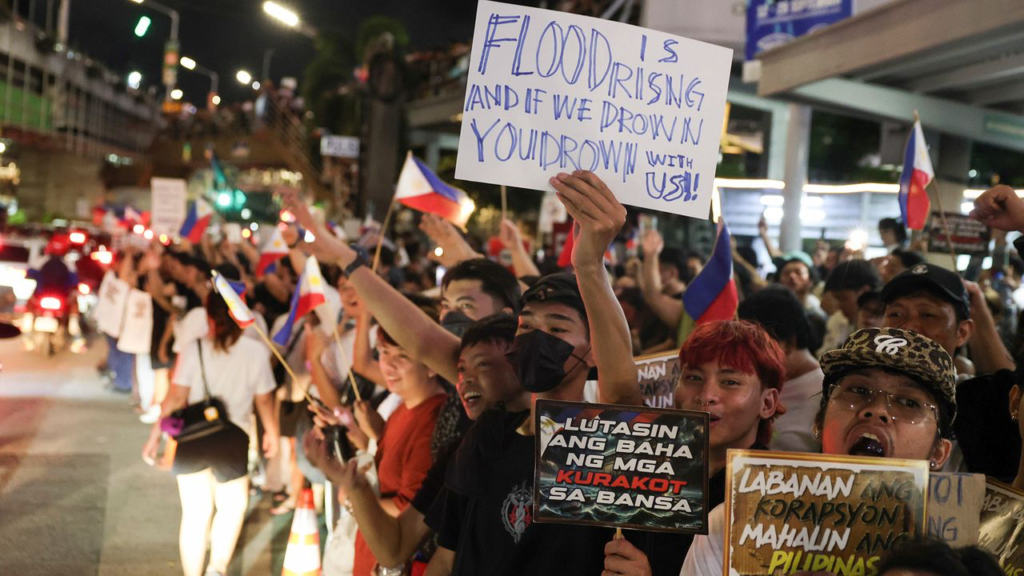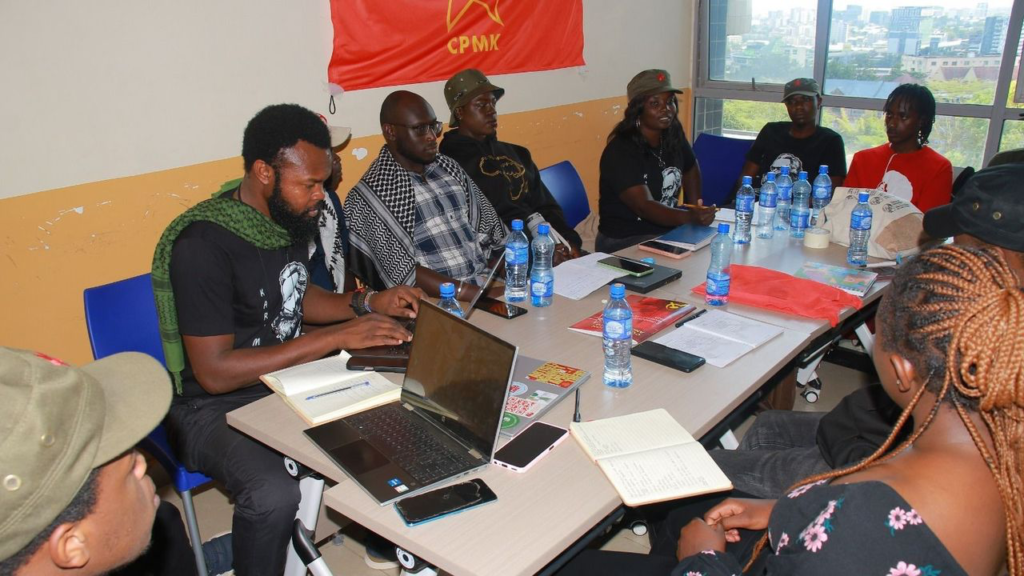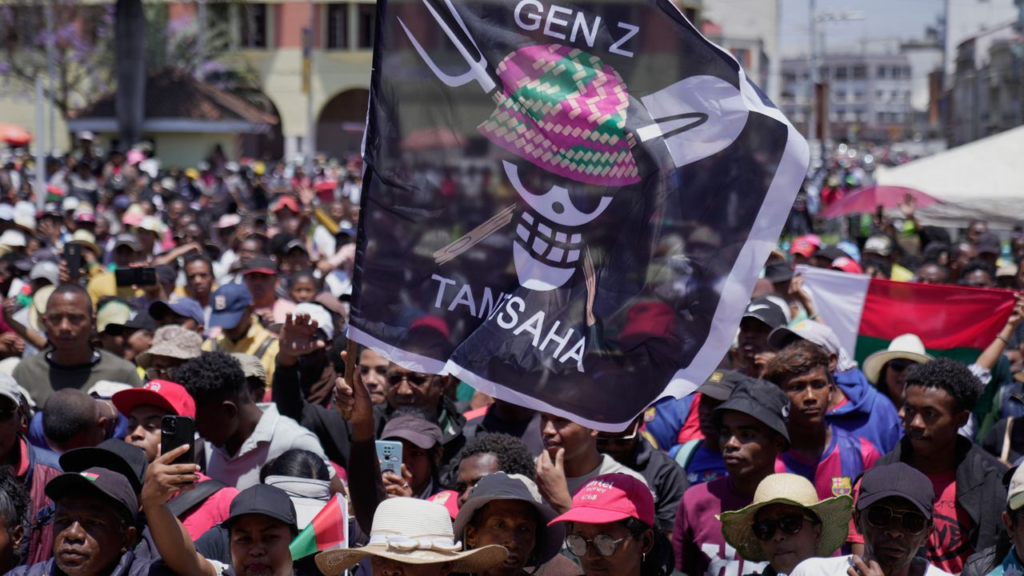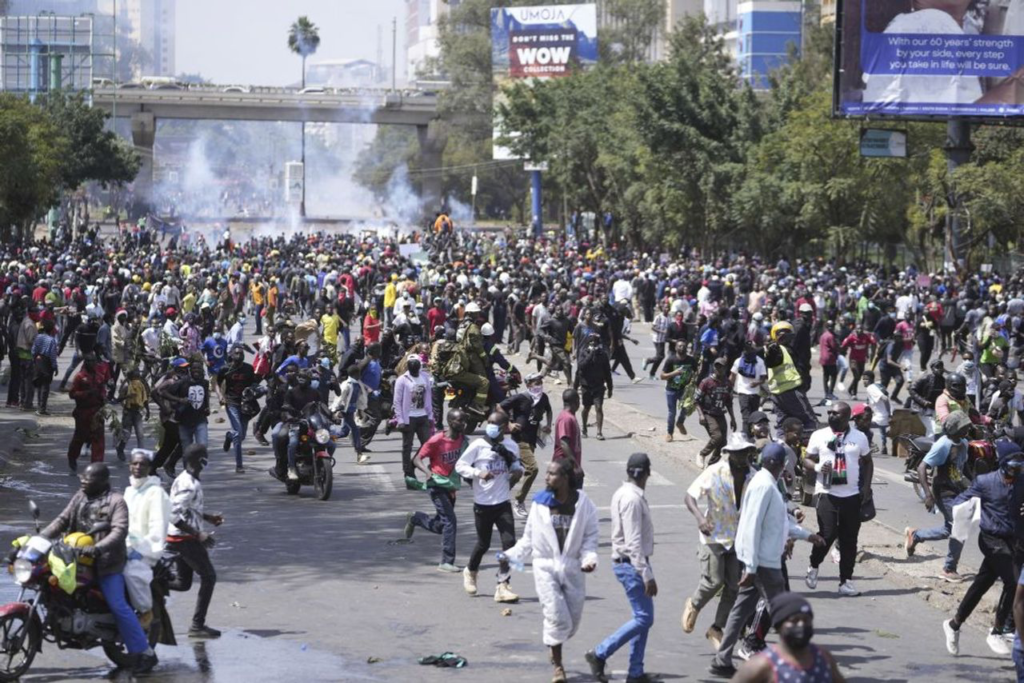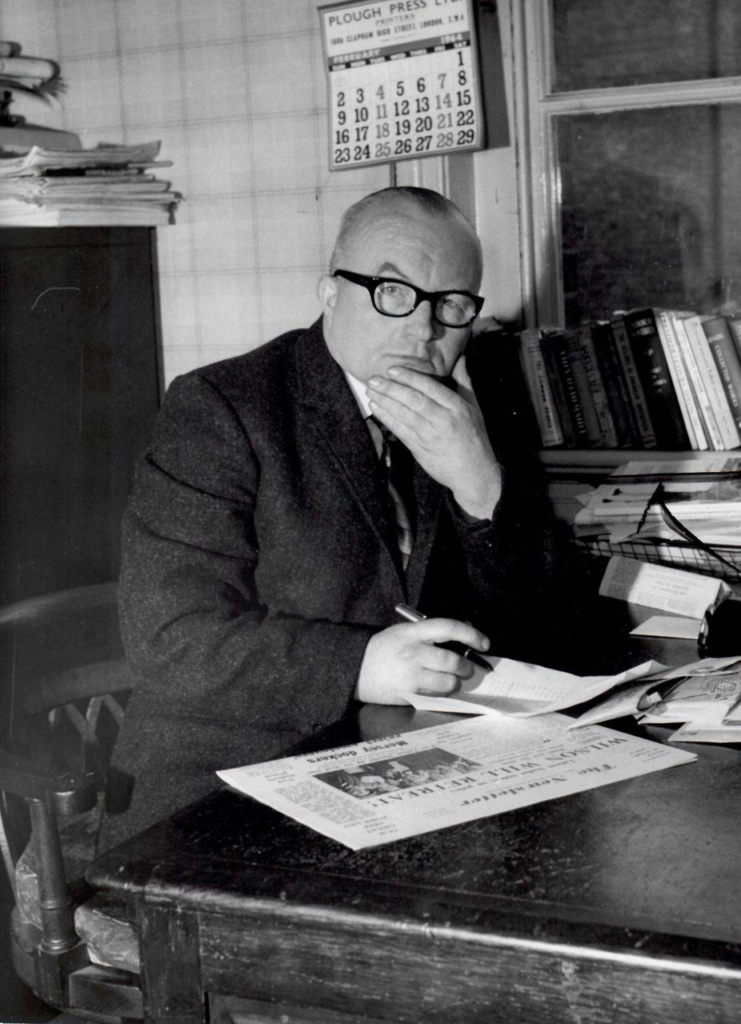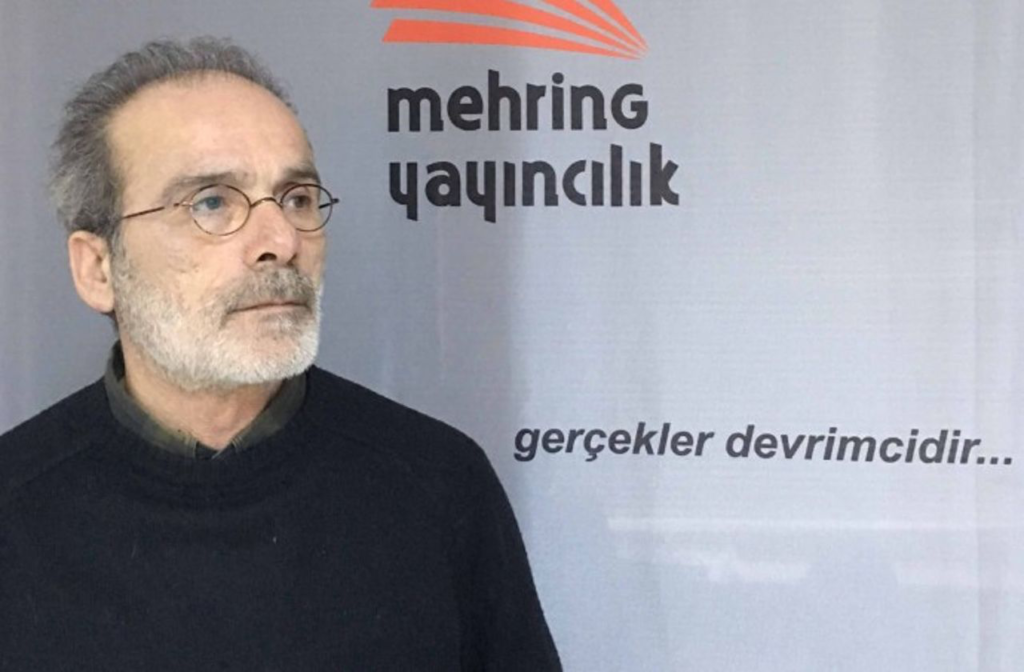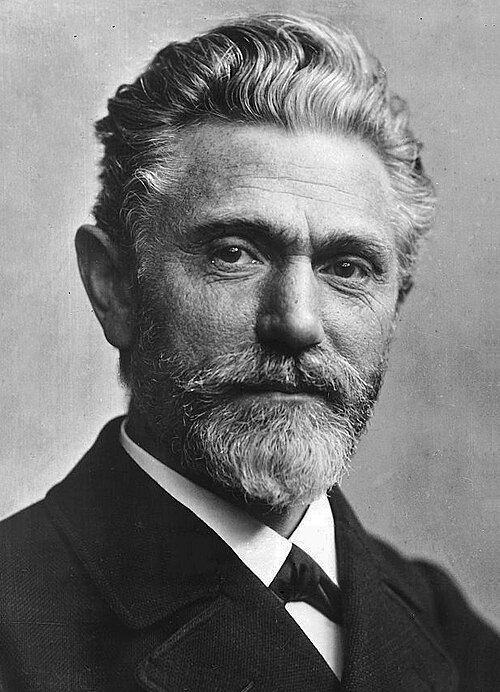රුසියාව සහ චීනය “අධිරාජ්යවාදී” ලෙස නම් කිරීම පිටුපස: න්යායික වංචාව පිළිබඳ සිද්ධි අධ්යයනයක්
ජොහැන්ස් ස්ටර්න් විසිනි.
ජොහැන්ස් ස්ටර්න් විසින් ලියා 2016 අප්රේල් 14 වන දින ලෝක සමාජවාදී වෙබ් අඩවියේ “Behind the designation of Russia and China as “imperialist”: A case study in theoretical charlatanry“ යන හිසින් ඉංහ්රීසි බසින් මුලින් ප්රකාශයට පත් කරන ලද මෙම ලිපිය, විප්ලවවාදී කොමියුනිස්ට් ජාත්යන්තර ප්රවණතාවයේ (RCIT) “අනුබද්ධ අංශයක්” ශ්රී ලංකාවේ මෑතකදී පිහිටුවීමත් සමඟ ක්ෂණික අදාළත්වයක් ලබා ගනී. 2025 නොවැම්බර් 9 වන දින ගාල්ලේ පැවති රැස්වීමකදී, RCIT ට සහාය දෙන කණ්ඩායමක් විප්ලවවාදී කම්කරු පෙරමුණ (RWF) නමින් එහි ශ්රී ලංකා අංශය ආරම්භ කළේය.
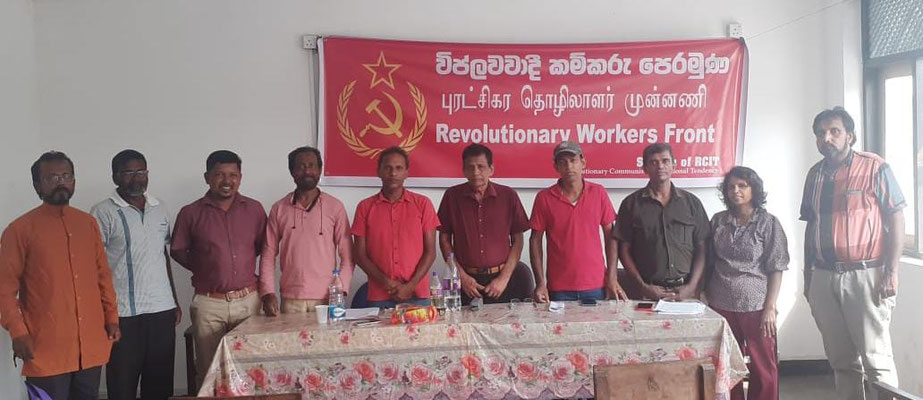
මෙම වර්ධනයේ කාලසීමාව හුදෙක් අහඹු සිදුවීමක් නොවේ. අධිරාජ්යවාදී බලවතුන් තුන්වන ලෝක යුද්ධයක් සඳහා වන තම සූදානමේ මට්ටම—යුක්රේනය තුළ රුසියාවට එරෙහි නේටෝ ප්රොක්සි යුද්ධයෙන් සහ චීනය සමඟ උත්සන්න වන ගැටුමෙන් ප්රකාශිත—තීව්ර කරන අවස්ථාවේ, RCIT වැනි ව්යාජ-වාම සංවිධාන කම්කරු පන්තිය දේශපාලනිකව මුළා කිරීමේ සහ එය පාලක පන්තියේ ඒ හෝ මේ කොටසකට යටත් කිරීමේ අත්යවශ්ය කාර්යභාරයක් ඉටු කරයි.
ස්ටර්න්ගේ ලිපිය RCIT හි න්යායික පදනම සහ දේශපාලන ගමන් මග පිළිබඳ විනාශකාරී හෙළිදරව්වක් සපයයි. RCIT හි ජාත්යන්තර ලේකම් මයිකල් ප්රොබ්ස්ටිං ගේ ලියවිලි පිළිබඳ සූක්ෂ්ම විශ්ලේෂණයක් හරහා, ලිපිය පෙන්වා දෙන්නේ, රැඩිකල් වාක්යාංශ සහ මාක්ස්, ලෙනින් සහ ට්රොට්ස්කි වෙත කරන රැවටිලිකාර සැඳහුම් පිටුපස, ඇමරිකානු සහ යුරෝපීය අධිරාජ්යවාදයේ උපායමාර්ගික අවශ්යතා සඳහා සේවය කරන දේශපාලන ඉදිරිදර්ශනයක් එයට තිබෙන බවයි.
රුසියාව සහ චීනය “අධිරාජ්යවාදී බලවතුන්” ලෙස RCIT විසින් නම් කිරීම බරපතල මාක්ස්වාදී විශ්ලේෂණයක නිෂ්පාදනයක් නොව, නේටෝ සහ පෙන්ටගනයේ ප්රචාරක අවශ්යතා වෙත දේශපාලන අනුගත වීමකි. මෙම න්යායික වංචනිකත්වය සංයුක්ත දේශපාලන කාර්යයන් ඉටු කරයි: එය ලෝකය ව්යසනය කරා තල්ලු කිරීමේ එක්සත් ජනපද, යුරෝපීය සහ ජපන් අධිරාජ්යවාදයේ කේන්ද්රීය භූමිකාව සාපේක්ෂව ලඝු කර අපැහැදිලි කරන අතර, අධිරාජ්යවාදය විසින් පිටුබලය දෙන තන්ත්ර-වෙනස් (regime change) කිරීමේ මෙහෙයුම් සහ ඊනියා “වර්ණ විප්ලවයන්” සඳහා සහයෝගය ලබා දීමට “වාම” ආවරණයක් සපයයි.
ස්ටර්න් පෙන්වා දෙන පරිදි, 2011 ලිබියාවේ නේටෝ සංවිධානය කළ යුද්ධයට RCIT හි සහයෝගය, සිරියාවේ තන්ත්ර වෙනස් කිරීම සඳහා වූ යුද්ධයේ ඉස්ලාම්වාදී ප්රොක්සි බලවේග වෙත එහි පිටුබලය, සහ 2014 යුක්රේනයේ එක්සත් ජනපදය විසින් පිටුබලය දුන් කුමන්ත්රණයට එහි පෙළගැසීම, එහි සාවද්ය න්යායික පදනම් වලින් සෘජුවම ගලා එයි. මෙම අධිරාජ්යවාදී මැදිහත්වීම්වල ව්යසනකාරී ප්රතිවිපාක—ලිබියාව සහ සිරියාව විනාශ කිරීම, ලක්ෂ සංඛ්යාත මහජනතාවගේ මරණ, මිලියන ගණනක් අවතැන් වීම, සහ ජිහාදි ත්රස්තවාදී ජාලවල වර්ධනය—RCIT හි දේශපාලනයේ ප්රතිගාමී ස්වභාවය හෙළි කරයි.
ශ්රී ලංකාවේ සහ දකුණු ආසියාව පුරා කම්කරුවන් විශේෂ වැදගත්කමකින් සැලකිය යුත්තේ ජාතික සහ වාර්ගික බෙදුම්වාදය ප්රවර්ධනය කිරීම සඳහා RCIT හි වැඩසටහනයි. “ජාතික ස්වයං නිර්ණය” සඳහා සහාය දැක්වීමේ ධජය යටතේ, RCIT ජාතික සහ වාර්ගික රේඛා ඔස්සේ රුසියාව සහ චීනය ඛණ්ඩනය කිරීම වෙනුවෙන් පෙනී සිටියි—එය ඇමරිකානු හමුදා සැලසුම්කරුවන් සහ චින්තන පර්ෂධ විසින් දක්වා ඇති භූ-දේශපාලන උපාය මාර්ග ප්රතිරාවය කරන වැඩසටහනකි. මෙම ඉදිරිදර්ශනය ලෙනින් සහ බොල්ෂෙවික්වරුන් විසින් ඉදිරිපත් කරන ලද ජාත්යන්තරවාදී වැඩසටහනට සෘජුවම පරස්පර වේ; එය සමාජවාදය වෙනුවෙන් වන අරගලයේදී ජාතික සහ වාර්ගික බෙදීම් හරහා කම්කරු පන්තිය එක්සත් කිරීමේ අතිමහත් අවශ්යතාවයට ජාතික ව්යාපාර සඳහා සහයෝගය යටත් කළේය.
ශ්රී ලංකා කම්කරු පන්තියේ අත්දැකීම RCIT හි බෙදුම්වාදී වැඩසටහනේ බලවත් ප්රතික්ෂේප කිරීමක් සපයයි. ධනවාදයේ ප්රතිවාදී කොටස් විසින් සිංහල සහ දෙමළ ජාතිකවාදය ප්රවර්ධනය කිරීම තුල මූලයන් ඇති දශක තුනක සිවිල් යුද්ධය පෙන්වා දුන්නේ, ජාතික සහ වාර්ගික බෙදීම් කම්කරු පන්තිය දුර්වල කිරීමට සහ ධනවාදී රාජ්යයට ශක්තිමත් කිරීමට පමණක් සේවය කරන බවයි. දෙමළ කම්කරුවන්ගේ සහ තරුණයන්ගේ ප්රජාතන්ත්රවාදී අයිතිවාසිකම් වෙනුවෙන් වන අරගලය ඉදිරියට ගෙන යා හැක්කේ දිවයිනේ සහ මුළු දකුණු ආසියානු උප මහද්වීපය පුරා සමාජවාදය වෙනුවෙන් සිංහල, දෙමළ සහ මුස්ලිම් කම්කරුවන්ගේ එක්සත් අරගලය හරහා පමණි.
ස්රී ලංකාවේ හා දකුණු ආසියාවේ සමාජවාදී නායකත්වය RCIT සහ ශ්රී ලංකාවේ එහි අලුතින් පිහිටුවන ලද “අනුබද්ධ අංශයේ” ක්රියාකාරකම් සමීපව නිරීක්ෂණය කරනු ඇත. කම්කරු පන්තිය අධ්යාපන ගත කිරීම සහ අධිරාජ්යවාදයේ සහ ජාතික ධනේශ්වරයේ අවශ්යතා වෙත කම්කරුවන් යටත් කිරීමට උත්සාහ කරන සියලුම දේශපාලන ප්රවණතා හෙළිදරව් කිරීම පිළිබඳ අපගේ වගකීම ලෙස, අපි RCIT හි ප්රති-මාක්ස්වාදී දේශපාලනයට එරෙහිව අවශ්ය ප්රතිවාදාත්මක (polemical) අරගලයේ නිරත වෙනු ඇත.
කම්කරුවන්, තරුණයන් සහ බුද්ධිමතුන් ස්ටර්න්ගේ ලිපිය හොඳින් අධ්යයනය කරන ලෙස අපි ඉල්ලා සිටිමු. එය මතු කරන දේශපාලන ප්රශ්න—අධිරාජ්යවාදය පිළිබඳ විද්යාත්මක විශ්ලේෂණය, ජාතික ප්රශ්නයට මාක්ස්වාදී ප්රවේශය, යුද්ධයට එරෙහි අරගලය, සහ ජාත්යන්තර කම්කරු පන්තියේ සැබෑ විප්ලවවාදී නායකත්වයක් ගොඩනැගීමේ අවශ්යතාවය—වත්මන් කාලපරිච්ඡේදයේ තීරණාත්මක වැදගත්කමක් ඇත. න්යායික පැහැදිලි බව සහ දේශපාලන මූලධර්ම පදනම මත පමණක්, කම්කරු පන්තියට යුද්ධය, ඒකාධිපතිත්වය සහ ධනවාදයට එරෙහි අරගලයේ ඉදිරි ගමන සැලසුම් කළ හැකිය.
***

පෙබරවාරි 18 වන දින ප්රකාශයට පත් කරන ලද “සමාජවාදය සහ යුද්ධයට එරෙහි සටන” යන ප්රකාශයේ දී, හතරවන ජාත්යන්තරයේ ජාත්යන්තර කමිටුව (හජාජාක),ව්යාජ-වාම සංවිධාන රුසියාව සහ චීනය අධිරාජ්යවාදී බලවතුන් ලෙස අර්ථ දැක්වීමට ඉක්මන් වී ඇති හේතුව කෙරෙහි සැලකිය යුතු අවධානයක් යොමු කරයි. [1]
“මෙම නිර්වචනය හිස් අවකාශයෙන් උදුරා ගෙන ඇති අතර, රුසියාව සහ චීනය, වසර 25 ක් වැනි කෙටි කාලයක් තුළ නිලධාරිවාදීව පරිහානියට පත් වූ සහ විකෘති වූ කම්කරු රාජ්යයන්ගේ සිට අධිරාජ්යවාදී බලවතුන් දක්වා පරිවර්තනය වූ ඓතිහාසික ක්රියාවලිය පැහැදිලි කිරීමට කිසිදු උත්සාහයක් ගෙන නැත.
බීජිං සහ මොස්කව්හි පාලන තන්ත්රයන්ට දේශපාලනික විරෝධය ප්රකාශ කිරීමේ කාරණයක් පමණක් නම්, “අධිරාජ්යවාදී” යන විරුදාවලිය භාවිතා කිරීම අවශ්ය නොවනු ඇත. ලෝක සමාජවාදී විප්ලවයේ අත්යවශ්ය අංගයක් ලෙස කම්කරු පන්තිය විසින් රුසියාවේ සහ චීනයේ ධනේශ්වර රාජ්යයන් පෙරලා දැමිය යුතු බව හතරවන ජාත්යන්තරයේ ජාත්යන්තර කමිටුව ඉල්ලා සිටී. …
චීනය සහ රුසියාව පිළිබඳ විස්තර සඳහා “අධිරාජ්යවාදී” යන වචනය එකතු කිරීමෙන් ඉටු වන්නේ කුමන දේශපාලන අරමුණක් දැයි විමසිය යුතුය? ප්රායෝගික දේශපාලනික විෂයෙන් ගත් කල, එය ඉතා නිශ්චිත කාර්යයන් ඉටු කරයි.
පළමුව, එය ඇමරිකානු, යුරෝපීය සහ ජපන් අධිරාජ්යවාදයේ කේන්ද්රීය හා තීරණාත්මක ගෝලීය ප්රතිවිප්ලවවාදී භූමිකාව සාපේක්ෂක කරන අතර එම නිසා එය හීන කරයි. මෙය, රුසියාව සහාය ලබා දී ඇති සිරියාවේ අසාද් තන්ත්රය වැනි පාලන තන්ත්ර වෙනස් කිරීමේ මෙහෙයුම් වලදී එක්සත් ජනපදය සමඟ ක්රියාකාරී සහයෝගීතාවය සදහා ව්යාජ-වමට පහසු කරයි. දෙවනුව, සහ ඊටත් වඩා සැලකිය යුතු ලෙස, චීනය සහ රුසියාව අධිරාජ්යවාදී ලෙස නම් කිරීම–සහ ඒ අනුව, ජනවාර්ගික, ජාතික, භාෂාමය සහ ආගමික සුළුතරයන් මර්දනය කරන යටත් විජිත බලවතුන් ලෙස ඇඟවුම් කිරීම–පවතින රාජ්යවල සීමාවන් තුළ අධිරාජ්යවාදී පිටුබලය ලත් “ජාතික විමුක්ති” නැගිටීම් සහ “වර්ණ විප්ලව” වලට සහාය දැක්වීමට ව්යාජ-වමට අවසර හිමි වෙයි.”
මෙම තක්සේරුව පස්වන ජාත්යන්තරය සඳහා ලීගයෙන් (LIFI) බිඳී ගිය විප්ලවවාදී කොමියුනිස්ට් ජාත්යන්තර ප්රවණතාවයේ (RCIT) දේශපාලනය මගින් සනාථ වේ. 1970 ගණන්වල ජාත්යන්තර සමාජවාදී ප්රවණතාවයේ (IST) භේදයකින් මතු වූ LIFI සහ RCIT යන දෙකම සතුව ට්රොට්ස්කිවාද විරෝධී දීර්ඝ වාර්තාවක් ඇත. ඔවුන්ගේ සුලු ධනේශ්වර නියෝජිතයින්ගේ ලක්ෂණය වන්නේ දක්ෂිණාංශික ධනේශ්වර බලවේග සඳහා ඔවුන්ගේ ප්රායෝගික සහයෝගය වසන් කිරීම සඳහා රැඩිකල් ශබ්ද නවන වාක්ය ඛණ්ඩ උච්චාරණය කිරීමයි.
RCIT සහ එහි ශාඛා මෙම ආකාරයේ දේශපාලනය අන්තයටම ගෙන යයි. එහි ජාත්යන්තර ලේකම් සහ ප්රමුඛ න්යායාචාර්ය මිෂෙල් ප්රොබ්ස්ටිං (Michael Pröbsting) විසින් ලියන ලද ලේඛන–රැඩිකල් සේ ශබ්ද නගන වාචාල කතා වලින් මුක්කු ගසන ලද මාක්ස්, ලෙනින් සහ ට්රොට්ස්කි පිළිබඳ සඳහන් කිරීම් නොතකා–අධිරාජ්යවාදී බලවතුන්ගේ විදේශ සහ ආරක්ෂක අමාත්යාංශ සහ චින්තන පර්ශද විසින් රචිත මූලෝපායික පත්රිකා මෙන් කියවේ.
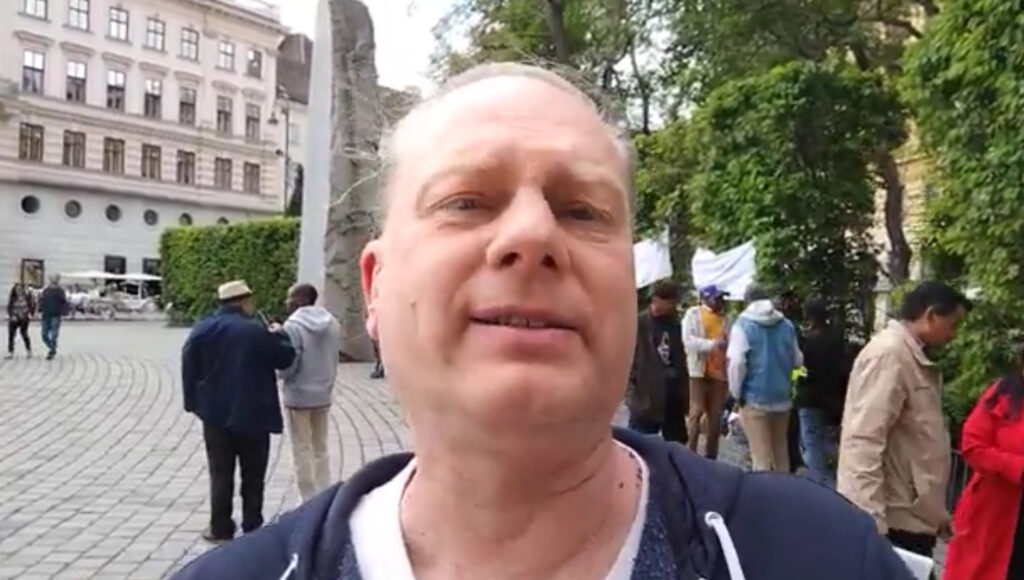
එක්සත් ජනපදය සහ යුරෝපීය සංගමය විසින් මෙහෙයවන ලද යුක්රේනයේ දක්ෂිණාංශික කුමන්ත්රණයෙන් යන්තම් සති කිහිපයකට පසුව, “මහා අධිරාජ්යවාදී බලවතෙකු ලෙස රුසියාව” යන මැයෙන් ප්රොබ්ස්ටින් විසින් රචිත පත්රිකාවක් ජර්මනියේ ප්රකාශයට පත් කරන ලදී. ලේඛනයේ ආරම්භක පේළිවල, ප්රොබ්ස්ටිං රුසියාව සහ චීනය අධිරාජ්යවාදී ආක්රමණිකයන් බව ප්රකාශ කරන අතර, එමඟින් ඔවුන්ට එරෙහි අරගලය ජාත්යන්තර දේශපාලනයේ කේන්ද්රීය ගැටලුව බවට ගම්ය කරයි.
ඔහු මෙසේ ලියයි:
“යුක්රේනයේ දේශපාලන අර්බුදය සහ සිරියාවේ සිවිල් යුද්ධය මෑතකදී නැවත වරක් රුසියාව අධිරාජ්යවාදී බලවතෙකු ලෙස කෙතරම් වැදගත් දැයි පෙන්නුම් කර ඇත. ඇත්ත වශයෙන්ම, මහා අධිරාජ්යවාදී බලවතුන් ලෙස රුසියාව සහ චීනය නැගීම මෑත දශකයේ ලෝක දේශපාලනයේ වැදගත්ම වර්ධනයන්ගෙන් එකකි. එය අභ්යන්තර අධිරාජ්යවාදී එදිරිවාදිකම් සැලකිය යුතු ලෙස වැඩි කර ඇති අතර එම නිසා විවිධ කලාපීය ගැටුම් සහ සිවිල් යුද්ධ තීව්ර කිරීම සඳහා පසුබිම සාදයි. 2008 ජෝර්ජියා යුද්ධය, චීනය, ජපානය සහ ඇමරිකා එක්සත් ජනපදය අතර නැගෙනහිර චීන මුහුදේ ගැටුම, සිරියානු සිවිල් යුද්ධය සහ දැන් යුක්රේනයේ සිදුවීම් අපි විශේෂයෙන් පෙන්වා දෙමු”. [2]
මෙසේ, ප්රොබ්ස්ටිංට අනුව, මෑත වසරවල ආක්රමණශීලීත්වය සහ ප්රධාන බලවතුන් අතර යුද්ධයක වැඩෙන අනතුර පිටුපස ඇති ගාමක බලවේග ඇමරිකානු සහ යුරෝපීය අධිරාජ්යවාදය නොවේ. ඒ වෙනුවට, ප්රධාන වගකීම පැවරෙන්නේ “අධිරාජ්යවාදී යටත් විජිත බලවතුන්” වන රුසියාව සහ චීනයටයි. ප්රොබ්ස්ටිං මෙසේ ප්රකාශ කරයි:
රුසියාවේ (සහ චීනයේ) අධිරාජ්යවාදී ස්වභාවය නොසලකා හැරීම බරපතල වැරැද්දක් බවත්, එය නොවැළැක්විය හැකි ලෙසම ප්රධාන ලෝක දේශපාලන සිදුවීම් තක්සේරු කිරීමේදී ව්යාකූලත්වයට හේතු වන බවත්, පන්ති අරගලයේ බැරිකේඩ වල වැරදි පැත්ත පවා ගැනිමට තුඩු දෙන බවත් අපි සිතමු. [3]
අප පෙන්නුම් කරන පරිදි, ප්රොබ්ස්ටිං විසින් ඉදිරිපත් කරන ලද ස්ථාවරයන්, “බැරිකේඩ වල වැරදි පැත්තේ” වැඩ කරන බලවේග සමඟ සන්ධානයන් පැහැදිලිවම යුක්ති සහගත කිරීමට ඔහුව යොමු කරයි.
“අධිරාජ්යය නැවත ගොඩනැගීම: රුසියානු අධිරාජ්යවාදයේ ග්රහණය පුළුල් කිරීම සදහා පුටින්ගේ ධාවනය” යන මාතෘකාවෙන් යුත් මෙම ලේඛනයේ III වන කොටසේ ප්රොබ්ස්ටිං මෙසේ පවසයි:
“රුසියාව තම රාජ්යය තුළ සහ ඉන් පිටත අනෙකුත් ජාතීන් පීඩාවට පත් කර සූරාකයි. රුසියාවේ ජනගහනයෙන් පහෙන් එකක් පමණ, එනම් 19.1% ක්, වාර්ගික සහ ජාතික සුළුතරයන්ට අයත් වේ. වඩාත්ම වැදගත් වන්නේ ටාටාර් (3.9%), යුක්රේනියානුවන් (1.2%), බෂ්කර් (1.1%), චුවාෂස් (1.1%), චෙචන් (1%), ආර්මේනියානුවන් (0.9%) සහ අනෙකුත් කුඩා ජනයා ය. සමස්තයක් වශයෙන් ගත් කල, රුසියාවේ ජනවාර්ගික කණ්ඩායම් 185 කට වඩා ජීවත් වෙති”. [4]
රුසියාවෙන් ජාතිකව හා වාර්ගිකව වෙන්වීමේ වැඩසටහන් ක්රියාත්මක කිරීම සඳහා RCIT සන්නද්ධ අරගලය අනුමත කරයි. ප්රොබ්ස්ටිං මෙසේ ප්රකාශ කරයි:
“චෙචන් යුද්ධවලදී සහ ඒ හා සමාන සියලු ගැටුම්වලදී RCIT හි ස්ථාවරය වන්නේ පීඩිත ජාතිකත්වයන් සඳහා ජාතික ස්වයං නිර්ණ අයිතිය කොන්දේසි විරහිතව ආරක්ෂා කිරීමයි. ජාතික හෝ ජනවාර්ගික කණ්ඩායමක් වෙන් වී තමන්ගේම රාජ්යයක් පිහිටුවීමට කැමති නම්, සමාජවාදීන් මෙම ආශාවට සහාය දිය යුතු අතර පීඩක රාජ්යයේ ඕනෑම මර්දනයකට එරෙහිව ඔවුන් ආරක්ෂා කළ යුතුය”. [5]
මෙම වැඩසටහනට බරක් ලබා දීම සඳහා, ප්රොබ්ස්ටින්ගේ ලේඛනයට “රුසියාවේ ජනවාර්ගික සහ ජාතික සුළුතරයන්”, “රුසියාවේ ස්වයං පාලන ප්රදේශ” සහ “රුසියාවේ ස්වාභාවික සම්පත්” සිතියම් ඇතුළත් කර ඇත. එකී ස්වාභාවික සම්පත් සම්බන්ධයෙන් ඔහු මෙසේ ලියයි:
“පහත සංඛ්යාලේඛනවලින් පෙන්නුම් කරන පරිදි, රුසියාවේ අමුද්රව්යවලින් සැලකිය යුතු කොටසක්–ඒවායින් තෙල් හා ගෑස් වඩාත් කැපී පෙනෙන නමුත් කිසිසේත්ම එකම ඒවා නොවේ–ජාතික සුළුතරයන් සැලකිය යුතු ප්රමාණයක් සිටින කලාපවල පිහිටා ඇත”. [6]
රුසියාව මෙන්ම චීනය ද කුඩා, පහසුවෙන් ජීර්ණය කළ හැකි කැබලිවලට කපා, රටවල වටිනා ස්වාභාවික සම්පත් පාලනය කිරීමේ ඉදිරිදර්ශනය, ප්රමුඛ අධිරාජ්යවාදී භූ-මූලෝපායකයින් විසින් දිගු කලක් තිස්සේ සාකච්ඡා කර ඇත.
එක් උදාහරණයක් Foreign Affairs හි වත්මන් සංස්කරණයෙන් සොයාගත හැකිය. ඉරාක ආක්රමණය පිටුපස සිටි ප්රමුඛ එක්සත් ජනපද මූලෝපාඥයන් සහ සැලසුම්කරුවන්ගෙන් එකෙකු වන වන රොබට් ඩී. කැප්ලාන්, “යුරේසියාවේ එළඹෙන අරාජිකත්වය” යන මාතෘකාවෙන් යුත් ලිපියකින් පුරෝකථනය කරන්නේ රුසියාවේ සහ චීනයේ ආර්ථික අර්බුදය ගැඹුරු අභ්යන්තර ආතතීන් අවුස්සනු ඇති බවයි. එහි ප්රතිඵලයක් ලෙස, විවිධ ජනවාර්ගික, ආගමික සහ භාෂාමය සුළුතරයන්ගෙන් ජාතික ස්වයං පාලනය සඳහා වන ඉල්ලීම් තීව්ර වනු ඇත. [7]
කැප්ලාන්ට අනුව රුසියාව “කැලඹීමකට” ඇද වැටෙනු ඇති අතර එය “නැවතත් කැබලිවලට කැඩී යා හැකිය.” ඔහු “කේන්ද්රයෙන් දුරස්ථ, ලේ වැකි දේශපාලනයෙන් බර වූ, රුසියාවේ සයිබීරියානු සහ ඈත පෙරදිග දිස්ත්රික්කවල ප්රදේශ සමඟ, දැඩි ලෙස මුස්ලිම් උතුරු කොකේසස්” වෙත අවධානය යොමු කරමින් සඳහන් කරන්නේ, ඒවා “ක්රෙම්ලිනය තුළම අස්ථාවරත්වයක් ඇති වුවහොත් මොස්කව් සමඟ ඔවුන්ගේ සබඳතා ලිහිල් වීමට පටන් ගත හැකි” බවයි.
චීනය සම්බන්ධයෙන් ගත් කල, කැප්ලාන් “මෙම විශාල රට තුළ වර්ධනය වන වාර්ගික ආතතීන්” ගැන අනතුරු අඟවයි. ඔහු තවදුරටත් මෙසේ පවසයි: “යම් දුරකට, හන් ආධිපත්යය දරන චීන රාජ්යය යනු මොංගෝලියානුවන්, ටිබෙට් ජාතිකයන් සහ උයිගර්වරුන් ඇතුළු විවිධ ජාතීන්ගේ සිරගෙයකි; ඔවුන් සියල්ලෝම විවිධ මට්ටම්වලින් මධ්යම පාලනයට විරුද්ධ වී ඇත.” කැප්ලාන් නිගමනය කරන්නේ, “අද, උයිගර් සටන්කාමීන් නියෝජනය කරන්නේ ආසන්නතම බෙදුම්වාදී තර්ජනයයි.”
සිරියාවේ ඉස්ලාමීය බලවේග සමඟ සහයෝගීතාවයෙන් ජවසම්පන්නව ඉදිරියට යාමට එක්සත් ජනපද අධිරාජ්යවාදය සහ එහි සහචරයින්ගේ අධිෂ්ඨානය, රුසියාවේ සහ චීනයේ බෙදුම්වාදී ව්යාපාර සඳහා මිලිටරි පුහුණුව ලබා දීම අරමුණු කරගත් බවට ඇඟවීම් තිබේ. පසුගිය දෙසැම්බරයේ London Review of Books හි පලවූ ලිපියක, හොඳ සබදතා ඇති එක්සත් ජනපද මාධ්යවේදී සෙමූර් හර්ෂ්, තුර්කිය “විශේෂ ප්රවාහනය මගින් උයිගර්වරුන් සිරියාවට ගෙනැවිත් ඇත්තේ, රිසෙප් ටයීප් එර්ඩෝගන්ගේ රජය චීනයේ ඔවුන්ගේ අරගලයට පක්ෂව උද්ඝෝෂණ කරමින් සිටින අතර” යයි වොෂින්ටනයේ නිලධාරියෙකු උපුටා දක්වමින් සදහන් කලේය. හර්ෂ් විසින් උපුටා දක්වන ලද එක්සත් ජනපද නිලධාරියා තවදුරටත් ප්රකාශ කළේ උයිගර් සටන්කරුවන් 800 කට වැඩි පිරිසක් ඊනියා “මී පාර” (rat line) හරහා සිරියාවට ගෙනැවිත් ඇති බවයි. [8]
මෙම ප්රතිපත්තියේ ඓතිහාසික වශයෙන් ප්රතිගාමී ඇඟවුම් විශේෂයෙන් චීනය සම්බන්ධයෙන් කැපී පෙනේ. 20 වන සියවස ආරම්භයේදී චීනයේ වර්ධනය වූ ජාතික ව්යාපාරය, ඓතිහාසික වශයෙන් ප්රගතිශීලී–අධිරාජ්යවාදී බලවතුන් විසින් ඔවුන්ගේ “විවෘත දොර” නම් කොල්ලකෑමේ වැඩසටහනේ අවශ්යතා සඳහා පවත්වාගෙන ගිය වැඩවසම් බෙදීම් ජය ගැනීම සඳහා විවිධ භාෂාමය සහ ජනවාර්ගික කණ්ඩායම් එක්සත් කිරීමේ–කර්තව්යයකට වෛෂයිකව මුහුණ දුන්නේය. කෙසේ වෙතත්, ධනේශ්වරයේ නායකත්වය යටතේ එය විසඳිය නොහැකි විය. ප්රොබ්ස්ටිං සහ RCIT රුසියාව සහ චීනය බෙදීමට ජාතිකවාදී සහ ජනවාර්ගික කේන්ද්රීය ව්යාපාර දිරිමත් කරන්නේ නම්, ප්රොබ්ස්ටිං සිට ගන්නේ, ඔවුන් ව්යාජ ලෙස ප්රකාශ කරන ලෙනින්ගේ සහ මාක්ස්වාදී ව්යාපාරයේ ජාත්යන්තරවාදී සමාජවාදී සම්ප්රදාය තුළ නොව, අධිරාජ්යවාදයේ සම්ප්රදාය තුළය.
සියවසකට වැඩි කාලයකට පෙර–එනම්, ගෝලීය ධනවාදී සංවර්ධනයේ අසමසම ලෙස පහළ මට්ටමක දී–ලියන ලද “ජාතික ප්රශ්නය” පිළිබඳ ලෙනින්ගේ කෘතිය, අධිරාජ්යවාදී පිටුබලය ලත් බෙදුම්වාදී ව්යාපාර සඳහා ඔවුන්ගේ සහයෝගය නීත්යානුකූල කිරීම සඳහා සුලු ධනේශ්වර ව්යාජ-වාම ප්රතිගාමීහු ඉඳහිට කැඳවා ගනිති. ජාතික ප්රශ්නයට ලෙනින්ගේ ප්රවේශය සැමවිටම “විවේචනශීලී” වූ බව ඔවුන් අනිවාර්යයෙන් නොසලකා හරිති. අප්රිකාවේ, මැදපෙරදිග සහ ආසියාවේ විශාල කොටස් වැඩවසම් ක්රමයේ සහ අධිරාජ්යවාදී-යටත් විජිතවාදී ආධිපත්යයේ නටබුන් වලට එරෙහිව ප්රජාතන්ත්රවාදී අරගලයේ පළමු අදියරවල යෙදී සිටි 1913 දී ලියමින්, ලෙනින් ජාතික පීඩනයට එරෙහි අරගලයේ සුජාතකභාවය පිළිගත්තේය. නමුත් ඔහු ස්වයං නිර්ණය සඳහා සහාය සඳහා දැඩි සීමාවන් පැනවීය. ස්වයං නිර්ණ ඉල්ලීම අනුමත කිරීමේ කාර්යය,
“බොහෝ දුරට සෘණාත්මක එකකි. නමුත් ජාතිකවාදයට සහාය දැක්වීමේදී නිර්ධන පන්තියට යා හැකි සීමාව මෙයයි, මන්ද ඉන් ඔබ්බට, ජාතිකවාදය ශක්තිමත් කිරීමට උත්සාහ කරනා ධනේශ්වරයේ “ධනාත්මක” ක්රියාකාරීත්වය ආරම්භ වේ… නමුත් මෙම දැඩි ලෙස සීමිත හා නිශ්චිත ඓතිහාසික සීමාවන් ඉක්මවා ඉන් ඔබ්බට යන්නට ධනේශ්වර ජාතිකවාදයට උදව් කිරීම යනු නිර්ධන පන්තිය පාවා දීම සහ ධනේශ්වරය සමඟ පැත්ත ගැනීමයි. මෙහි මායිම් රේඛාවක් ඇත, එය බොහෝ විට ඉතා සිහින් වන අතර බුන්ඩිස්ට්වාදීන් සහ යුක්රේන ජාතිකවාදී-සමාජවාදීහු එය සම්පූර්ණයෙන්ම නොසලකා හරිති. [9]
1913 දී පවා, ලෙනින් ජාතික බෙදුම්වාදයේ ධජය යටතේ අසංඛ්යාත කුඩා රාජ්යයන් පිහිටුවීම සඳහා සහාය ප්රතික්ෂේප කළේය. මධ්යගතකරණයේ ආර්ථික වැදගත්කම ඔහු අවධාරණය කරමින්, “පන්ති සවිඥානික නිර්ධන පංතිය සැමවිටම විශාල රාජ්යය වෙනුවෙන් පෙනී සිටිනු ඇත” යනුවෙන් තර්ක කළේය. [10] මෙය ලියා ඇත්තේ, ඔක්තෝබර් විප්ලවයට පෙර, ධනේශ්වර ගෝලීයකරණයේ සංවර්ධනය බෙහෙවින් පහළ මට්ටමක පැවති අවස්ථාවක සහ ජාතික හා වාර්ගික බෙදුම්වාදය ප්රවර්ධනය කිරීම කම්කරු පන්තියේ පන්ති සවිඥානික කොටස්වල සමාජවාදී සහ ජාත්යන්තරවාදී අභිලාෂයන්ට එරෙහිව ධනේශ්වර-අධිරාජ්යවාදී යුද්ධයේ වඩාත්ම බලගතු අවිය බවට පත්වීමට වසර 103 කට පෙරය.
ඓතිහාසික නොදැනුවත්කම න්යායික වංචාව සමඟ ඒකාබද්ධ කරමින් ප්රොබ්ස්ටිං, ජාතික ස්වයං නිර්ණය පිළිබඳ සටන් පාඨය යොදා ගනිමින්, කම්කරු පන්තිය බෙදීමට සහ අධිරාජ්යවාදය විසින් ගොඩනඟා අරමුදල් සපයනු ලැබුවා වුවද සියලු ජාතික හා වාර්ගික බෙදුම්වාදී ව්යාපාරවලට “කොන්දේසි විරහිත” සහයෝගය ලබා දෙයි. RCIT පැහැදිලිවම “විමුක්ති අරගලයට–එහි සන්නද්ධ ස්වරූපය ද ඇතුළුව–කොන්දේසි විරහිත සහයෝගයක්!” ඉල්ලා සිටී. මෙය “උදාහරණයක් ලෙස සමාජවාදී දෙමළ ඊලම, එක්සත් අයර්ලන්තය, එක්සත් කාශ්මීරය, ස්වාධීන කුර්දිස්තානය, චෙච්නියාව, ටිබෙට් යනාදිය සඳහා” අදාළ වේ. RCIT මෙම බෙදුම්වාදී වැඩසටහන, “චීනයේ උයිගර්, තුර්කිය, ඉරාකය, ඉරානය සහ සිරියාවේ කුර්දි, චෙච්නියානුවන් සහ රුසියාවේ අනෙකුත් කොකේසියානු ජනයා” දක්වා ව්යාප්ත කරයි. [11]
පසුගිය දශක කිහිපයේ ඓතිහාසික අත්දැකීම් සහ දේශපාලන පාඩම් ග්රහණය කර ගැනීමට පවා උත්සාහ නොකර, ප්රොබ්ස්ටිං සහ RCIT ඉතා විවිධාකාර ගැටළු එකට එකතු කරති. මෙම සංකීර්ණ ක්රියාවලීන් සවිස්තරාත්මක විශ්ලේෂණයකට භාජනය කිරීම මෙම ලිපියේ කාර්යය නොවේ, නමුත් RCIT හි දේශපාලනයේ ප්රතිගාමී ස්වභාවය අවම වශයෙන් උදාහරණ දෙකක් ආශ්රයෙන් පෙන්නුම් කළ යුතුය.
ශ්රී ලංකාවේ තිස් වසරකට වැඩි කාලයක් පැවති සිවිල් යුද්ධය, දෙමළ බෙදුම්වාදය කම්කරු පන්තියට ආවෘත අන්තයක් බවත්, “සමාජවාදී දෙමළ ඊලමක්” සඳහා අරගලය සාක්ෂාත් කරගත හැක්කේ ශ්රී ලංකාව පුරා සමාජවාදය සඳහා අරගලයක යෙදෙන සිංහල හා මුස්ලිම් කම්කරුවන් සමඟ සන්ධානයකින් පමණක් බවත් ඔප්පු කර ඇත. කාශ්මීරයට ද එය එසේම අදාළ වේ. 1947 දී ඉන්දියාව ආගමික රේඛා ඔස්සේ බෙදා ලීමට එරෙහිව සමස්ත ඉන්දියානු උප මහාද්වීපයේම සමාජවාදී ඉදිරිදර්ශනයක් සහ ජනතාවගේ ඒකාබද්ධ අරගලයක් නොමැතිව, “ස්වාධීන කාශ්මීරයක්” සඳහා වන ඉල්ලීම ගැඹුරින්ම ප්රතිගාමී ය.
ස්ටැලින්වාදී නිලධරය විසින් සෝවියට් සංගමය විසුරුවා හැරීමෙන් පසු, අධිරාජ්යවාදී බලවතුන් නැවත නැවතත් ගැටුම් දිරිමත් කර ඇති අතර තමන්ගේම භූ මූලෝපායික සහ ආර්ථික අවශ්යතා සපුරා ගැනීම සඳහා ජාතික හා වාර්ගික සුළුතරයන් එකිනෙකාට එරෙහිව තල්ලු කර ඇත. මේ සඳහා ලේ වැකි උදාහරණයක් වූයේ 1990 ගණන්වල යුගෝස්ලාවියාව ප්රචණ්ඩ ලෙස බෙදීමයි; එහිදී ලක්ෂ සංඛ්යාත ජීවිත හානි සහ මිලියන සංඛ්යාත සරණාගතයින් බිහිවීම සිදුවිය. ජර්මනිය සහ ඇමරිකා එක්සත් ජනපදය, සර්බියානුවන්, මුස්ලිම්වරුන් සහ ක්රොඒෂියානුවන් එකිනෙකා මරා ගැනීමට පෙළඹවීමේදී ප්රමුඛ කාර්යභාරයක් ඉටු කළ අතර, පසුව ඔවුන්ම මිලිටරිමය වශයෙන් මැදිහත් විය. බොහෝ ව්යාජ-වාම සංවිධාන ධනේශ්වර ජාතිකවාදයේ විෂ පතුරුවා හැරීම සඳහා අධිරාජ්යවාදී බලවතුන් සමඟ සමීපව සහයෝගයෙන් කටයුතු කළේය. “1992-95 දී බොස්නියානුවන්ගේ අරගලයට” සහ “1999 දී කොසෝවෝ ඇල්බේනියානුවන්ගේ” අරගලයට සහාය දුන් බවට RCIT අද දක්වාම පුරසාරම් දොඩමින් සිටී. අධිරාජ්යවාදී බලවතුන්ගේ වත්මන් යුද ප්රතිපත්තිවල සන්දර්භය තුළ, RCIT හි අත්වල ද ලේ තැවරී ඇති අතර, ICFI විසින් එහි ප්රකාශයේ විස්තර කර ඇති එම භූමිකාවම ඉටු කරමින් සිටී.
සිරියාවේදී, ඔවුන් “සිරියානු විප්ලවය ආරක්ෂා කිරීමේ” නාමයෙන්, සීඅයිඒ පිටුබලය ලත් පාලන තන්ත්ර වෙනසක් සඳහා වන යුද්ධයට පක්ෂව ප්රචාරණයේ යෙදෙති.
“සිරියානු විප්ලවයේ පස්වන සංවත්සරය වෙනුවෙන්” මාර්තු 8 වන දින නිකුත් කරන ලද පත්රිකාවක, වෙනත් දේ අතර, “අද, රුසියානු රාශිභූත හමුදා ප්රහාර සහ ඉරානය මෙහෙයවන දහස් ගණනක හමුදා ආධාරයෙන්, අසාද් තන්ත්රය නිදහස් ඇලෙප්පෝව දියකර හැරීමට තර්ජනය කරයි” යනුවෙන් සඳහන් වේ. [12] පසුගිය දෙසැම්බරයේ “සියලු විප්ලවවාදී සංවිධාන සහ ක්රියාකාරීන් වෙත විවෘත ලිපියක්” ලියමින්, “සිරියාවේ විප්ලවවාදී විමුක්ති අරගලය අඛණ්ඩව පවතී, නමුත් දැවැන්ත තර්ජනවලට මුහුණ දෙයි. රුසියානු අධිරාජ්යවාදයේ මෙන්ම ඉරානයේ ද පූර්ණ සහයෝගය ඇතිව බෂාර් අල්-අසාද්ගේ මිනීමරු ආඥාදායකත්වය තමන්ගේම ජනතාවට එරෙහිව විනාශකාරී යුද්ධය දිගටම කරගෙන යයි,” යනුවෙන් ඔවුහු සඳහන් කළහ.[13]
ඒ අතරම, අධිරාජ්යවාදී බලවතුන් විසින් මැද පෙරදිග කැබලි කර යලි යටත් විජිතකරණය කිරීමට විරුද්ධ වන “කට්ටිවාදී අධිරාජ්ය විරෝධීන්” RCIT හෙළා දකී.
“විමුක්ති අරගල සහ අධිරාජ්යවාදී මැදිහත්වීම්. බටහිර රටවල කට්ටිවාදී ‘අධිරාජ්ය විරෝධ’ අසාර්ථකත්වය: මාක්ස්වාදී දෘෂ්ටි කෝණයෙන් සමහර පොදු සලකා බැලීම් සහ 2011 දී ලිබියාවේ ප්රජාතන්ත්රවාදී විප්ලවයේ උදාහරණය” යන රුවටිලිකාරී මාතෘකාව දරන වැඩ සටහන් ලිපියක–ප්රොබ්ස්ටිං 2011 දී ලිබියාවේ නේටෝ යුද්ධය විප්ලවයක් සහ කම්කරු පන්තියේ ජයග්රහණයක් ලෙස සුබ පැතීම ප්රතික්ෂේප කළ සියල්ලන්ටම පහර දෙයි.
ප්රොබ්ස්ටිං මෙසේ ලියයි:
“අනෙක් අතට, අපි තර්ක කරන්නේ ධනේශ්වර-බොනපාට්වාදී ගඩාෆි පාලනය පරාජය කළ බැවින් ලිබියානු විප්ලවය කම්කරු පන්තියට සහ පීඩිතයින්ට අර්ධ ජයග්රහණයක් ලබා දෙමින් අවසන් වූ බවයි… ලිබියානු විප්ලවයේ තවත් ධනාත්මක ප්රතිවිපාකයක් වන්නේ අසාවඩ් ජනරජය පිහිට වූ මාලි හි ටුවාරෙග් ජනතාවගේ ජාතික විමුක්ති අරගලයේ ප්රගතියයි… නැවතත්, අපගේ මතය අනුව, මෙය පෙන්නුම් කරන්නේ ලිබියාවේ ප්රජාතන්ත්රවාදී විප්ලවයේ අර්ධ ජයග්රහණය පීඩිත ජනතාවට වාසිදායක වී ඇති බවයි.” [14]
මෙම තක්සේරුව විකාර සහගත මෙන්ම නරුම ද වේ. ගඩාෆි තන්ත්රය “පෙරලා දමන ලද්දේ” ලිබියානු කම්කරුවන්ගේ ස්වාධීන දේශපාලන ව්යාපාරයක් විසින් නොව, ගුවනින් නේටෝ බෝම්බ සහ බිමින් බටහිර රටවල සහාය ඇති ඉස්ලාමීය ප්රොක්සි (නියෝජිත) හමුදා විසිනි. මෙම “අර්ධ ජයග්රහණයේ” ප්රතිඵලය වන්නේ විනාශභාග වූ සමාජයක්, දස දහස් ගණනක් මරණ, ලක්ෂ සංඛ්යාත සරණාගතයින් සහ අධිරාජ්යවාදී බලවතුන්ගේ මැදිහත්වීමක අලුත් තර්ජනයයි.
මෙම වර්ධනය මාලි රාජ්යයට කිසිසේත් “වාසිදායක” දෙයක් නොවීය. එය ව්යසනයක් විය. ස්වාභාවික සම්පත්වලින් පොහොසත් රට, ලිබියානු යුද්ධය සහ එහි අසල්වැසියාගේ විනාශය හේතුවෙන් අර්බුදයකට ඇද දමා අස්ථාවර විය. උතුරේ ටුවාරෙග් සටන්කාමීන් සහ ඉස්ලාම්වාදීන්ගේ කැරැල්ල “විමුක්තිය” කරා නොව, සිවිල් යුද්ධයට සමාන තත්වයන්ට, බමාකෝහි හමුදා කුමන්ත්රණයකට සහ හිටපු යටත් විජිත බලවතා වූ ප්රංශයේ සහ එක්සත් ජනපදය ඇතුළු එහි අධිරාජ්යවාදී සහචරයින්ගේ මිලිටරි මැදිහත්වීමට මඟ පෑදීය.
RCIT හා සමාන ආස්ථානයන් අනුගමනය කරන බොහෝ ව්යාජ-වාම ප්රවනතා දේශපාලනිකව ප්රතිගාමී බලවේගයන්ට අනුවර්තනය වීම සැඟවීමට උත්සාහ කරද්දි, RCIT මූලෝපායික අත්යවශ්යතාවයක් ලෙස ප්රති-විප්ලවවාදී ප්රවනතා සමඟ සහයෝගී වීම සාධාරණීකරණය කරයි.
එහි “විප්ලවවාදී කොමියුනිස්ට් ප්රකාශනයේ” RCIT මෙසේ ප්රකාශ කරයි:
“ඇත්ත වශයෙන්ම, වර්තමාන තත්වයන් යටතේ එවැනි නව ජාතික පක්ෂයක් හෝ පස්වන ජාත්යන්තරයක් පරස්පර විරෝධී පන්ති ස්වභාවයක් ගන්නා බව අපි දනිමු, මන්ද එයට විප්ලවවාදී පමණක් නොව, ප්රතිසංස්කරණවාදී සහ මාධ්යමික බලවේග ද ඇතුළත් වන බැවිනි. මෙය, එහි නායකයින් පන්ති අරගල මාලාවකින් අසාර්ථක වනු ඇති, නැතහොත් කම්කරුවන්ට එරෙහිව බැරිකේඩ වල අනෙක් පැත්තේ පවා සිටගනු ඇති ජාත්යන්තරයක් වනු ඇත.” [15]
මෙම පුදුමාකාර සූත්රගත කිරීම RCIT හි භාවිතය තුළ මුල් බැස ඇත. RCIT හි අංශ ඇති සහ දේශපාලනිකව ක්රියාකාරී වන ඕනෑම තැනක, එය ධනේශ්වර බලවේගයන්ට සහාය දක්වන අතර ඇත්ත වශයෙන්ම “බැරිකේඩ වල අනෙක් පැත්තේ” සිටගෙන සිටී. 2013 දී ඔස්ට්රියාවේ පැවති අවසන් ජාතික මැතිවරණවලදී, RKO ලිබරේෂන් (RKOB) සමාජ ප්රජාතන්ත්රවාදීන්ට (SPÖ) ඡන්දය දෙන ලෙස ඉල්ලා සිටි අතර, එය දැනට වියානාහි ෆෙඩරල් මට්ටමින් කොන්සර්වේටිව් ඔස්ට්රියානු මහජන පක්ෂය (ÖVP) සමඟ සන්ධානයක් පිහිටුවා සිටිද්දි, බර්ගන්ලන්ඩ් ප්රාන්තයේ අන්ත දක්ෂිනාංශික, විදේශික භීතික (xenophobic) ඔස්ට්රියානු නිදහස් පක්ෂය (FPÖ) සමඟ සන්ධානයක සිටී.
අප්රිකාවේ සහ ආසියාවේ ඔවුන්ගේ ආධාරකරුවන් අන්ත දක්ෂිණාංශික ජාතිකවාදී බලවේග සමඟ සහයෝගයෙන් කටයුතු කරති. කලින් උපුටා දක්වන ලද “විවෘත ලිපියේ” RCIT, “ප්රතිසංස්කරණවාදීන්ගේ සහ ජනතාවාදීන්ගේ බලපෑම යටතේ සිටින අය ඇතුළත් විය යුතු කම්කරුවන්ගේ සහ ජනප්රිය සංවිධානවල බහුජන එක්සත් පෙරමුණක්” වෙනුවෙන් පෙනී සිටී.
මෙම දක්ෂිණාංශික, ධනේශ්වර සහ අධිරාජ්ය ගැති දිශානතිය අනෙකුත් ව්යාජ-වාම ප්රවනතාවන්ගේ සහයෝගය ලබාගෙන ඇත. ප්රොබ්ස්ටිං බොහෝ ව්යාජ-වාම සාකච්ඡා අවස්ථාවල ඉහලින් පිළිගන්නා ආරාධිත අමුත්තෙක් වේ; උදාහරණයක් ලෙස, 2015 ජූලි මාසයේදී හතරවන ජාත්යන්තරය නැවත ස්ථාපිත කිරීම සඳහා වූ සම්බන්ධීකරණ කමිටුව (CRFI) විසින් සංවිධානය කරන ලද ඇතන්ස් හි පැවති “තුන්වන යුරෝ-මධ්යධරණී සමුළුවේදී” ඔහු කතා කළේය. CRFI හි සාමාජිකයින් අතර, 1985 දී ICFI යෙන් සහ ජාත්යන්තර කම්කරු පන්තිය සඳහා මොනයම්ම හෝ සමාජවාදී ඉදිරිදර්ශනයකින් බිඳී ගිය සවාස් මයිකල්-මට්සාස් විසින් නායකත්වය දෙන ග්රීසියේ කම්කරු විප්ලවවාදී පක්ෂය (EEK) සහ ආර්ජන්ටිනාවේ කම්කරු පක්ෂය (PO) ඇතුළත් වේ. [16]
සමුළුව පිළිබඳ සිය වාර්තාවේ දී, රුසියානු සහ යුක්රේන නියෝජිතයින්ගේ දායකත්වයන් RCIT විවේචනය කළේ ඔවුන් “රුසියානු අධිරාජ්යවාදයට එරෙහි ඔවුන්ගේ මෘදු බව බොහෝ විට ප්රකාශ කළ” බැවිනි. CRFI හි “සහෝදරවරුන්” සමඟ “වැදගත් දේශපාලන වෙනස්කම්” ද තිබුණි. RCIT මෙසේ ලිවීය:
“RCIT රුසියාව සහ චීනය අධිරාජ්යවාදී බලවතුන් ලෙස විස්තර කළද, මෙම සහෝදරවරු එසේ නොකරති. තවද, RCIT එහි සුලු ධනේශ්වර ඉස්ලාමීය නායකත්වය නොතකා සිරියානු විප්ලවයට සහාය දීම දිගටම කරගෙන යන අතර, RedMed සහෝදරවරු [RedMed ජාලය CRFI ඔන් ලයින් වේදිකාවකි] ඔවුන්ගේ සහයෝගය නවතා දැන් පරාජකවාදී ආස්ථානයක් ගෙන ඇත.” [17]
මෙම වෙනස්කම් තිබියදීත්, RCIT ය සමුළුව “ප්රයෝජනවත්” බව සටහන් කළේය.
***
පාදසටහන්
[1] බලන්න http://www.wsws.org/en/articles/2016/02/18/icfi-f18.html/
[2] “Russia as a Great Imperialist Power,” Revolutionary Communism, No. 21, March 2014, p. 3. සම්පූර්ණ ප්රකාශය: http://www.thecommunists.net/theory/imperialist-russia/
[3] එම
[4] එම, 16 පිටුව
[5] එම
[6] එම
[7] https://www.foreignaffairs.com/articles/china/2016-02-15/eurasias-coming-anarchy
[8] http://www.lrb.co.uk/v38/n01/seymour-m-hersh/military-to-military
[9] “Critical Remarks on the National Question,” Lenin Collected Works, Volume 20 [Moscow, 1964], pp. 34-35
[10] එම, පිටුව 46
[11] “The Revolutionary Communist Manifesto,” Programme of the Revolutionary Communist International Tendency (RCIT), pp. 48-49
[12] http://www.thecommunists.net/worldwide/africa-and-middle-east/rcit-als-syria/
[13] http://www.thecommunists.net/rcit/open-letter-revolutionary-unity/
[14] http://www.thecommunists.net/theory/liberation-struggle-and-imperialism/
[15] http://www.thecommunists.net/rcit-manifesto/the-leadership-we-have-and-the-leadership-we-need/
[16] ප්රොබ්ස්ටිංගේ නව දේශපාලන සගයෙකු වන්නේ ඇලෙක්ස් ස්ටයිනර් ය. ඔහු වසර 40 කට පමණ පෙර හතරවන ජාත්යන්තරයෙන් ඉවත් වූ අතර එතැන් සිට දරුණු ට්රොට්ස්කි විරෝධීයෙකු බවට වර්ධනය වී ඇත. පාලනය කළ නොහැකි දේශපාලන අවස්ථාවාදයේ සහ ට්රොට්ස්කිවාදී ව්යාපාරයේ නායකත්වයේ ඔහුගේ පැරණි සහෝදරවරුන් කෙරෙහි ව්යාධිජනක ආත්මීය වෛරයක දුෂ්ට අන්තර්ක්රියාවකින් මෙහෙයවනු ලැබෙන ස්ටයිනර්ට, සගයන් තෝරා ගැනීමේදී ඔහුගේ ප්රධාන නිර්ණායකය වන්නේ හතරවන ජාත්යන්තරයේ ජාත්යන්තර කමිටුවට ඔවුන්ගේ විරුද්ධත්වයයි. ඔහු ICFI ට එරෙහිව විභව්ය සහචරයින් සෙවීම සඳහා යුරෝ-මධ්යධරණී සමුළුවට සහභාගී වූ අතර එහිදී ඔහුට ප්රොබ්ස්ටිං හමුවිය. රුසියාව සහ චීනය අධිරාජ්යවාදී ලෙස අර්ථ දැක්වීම අනුමත කරමින්, ස්ටයිනර් ප්රොබ්ස්ටිංගේ ලේඛන ඔහුගේ permanent-revolution.org බ්ලොග් අඩවියේ පළ කරයි. ස්ටයිනර්ගේ දේශපාලන ඉතිහාසය පිළිබඳ සවිස්තරාත්මක සමාලෝචනයක් ඩේවිඩ් නෝර්ත්ගේ “ෆ්රැන්ක්ෆර්ට් පාසල, පශ්චාත් නූතනවාදය සහ ව්යාජ-වාම දේශපාලනය: මාක්ස්වාදී විවේචනයක්” හි අන්තර්ගත වේ. [කියවන්න: https://mehring.com/frankfurt-school-postmodernism.html]
[17] http://www.thecommunists.net/rcit/euro-mediterranean-conference-2015/


